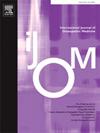Shaft femoral fracture secondary to osteopathic manipulation: Case report and medico-legal implication
IF 1.5
4区 医学
Q2 MEDICINE, GENERAL & INTERNAL
引用次数: 0
Abstract
Background
People increasingly look for osteopathic practitioners due to musculoskeletal conditions, particularly for low back pain. Serious complications such as femur fractures are rare, and often depend on bone fragility due to osteoporosis or neoplastic involvement.
Case report
We present a 43-year-old woman who suffered a femur fracture following osteopath manipulation at the lumbar and right thigh for low back pain of recent onset. The osteopath did not document informed consent disclosure and personal clinical history collection. After hospitalisation, the patient underwent synthesis with femoral nailing. Further investigations found secondary pelvic and spinal bones lesions of a breast cancer, 12 years after the treatment and out of follow-up.
Discussion
In Italy, the osteopath is a health professional aimed at maintaining well-being through external manipulation. The osteopath must then document in writting the informative process concerning the osteopathic method and the related risks, as well as the subject's consent. Meanwhile, a preliminary pathological history collection and objective examination must be performed to exclude pathological conditions, otherwise to be referred to a physician for further assessment and management.
Conclusions
The osteopath, who usually works as a self-insured free-lance professional, is called to inform the patient of the risks associated with manipulation and of alternative options, and to plan the care pathway after proper clinical assessment of the subject, by anticipating the possibility of further investigation by a physician.
股骨骨干骨折继发于整骨手法:病例报告和医学法律意义
背景:由于肌肉骨骼疾病,特别是腰痛,人们越来越多地寻找整骨疗法从业者。严重的并发症,如股骨骨折是罕见的,往往依赖于骨质疏松症或肿瘤累及的骨脆性。病例报告:我们报告一名43岁的女性,因近期腰背部疼痛,在腰椎和右大腿进行整骨术后发生股骨骨折。整骨医生没有记录知情同意披露和个人临床病史收集。住院后,患者行股内钉合成。进一步的调查发现继发性骨盆和脊柱病变的乳腺癌,12年后治疗和随访。在意大利,整骨医生是一种旨在通过外部操作来维持健康的健康专业人士。整骨医生必须书面记录整骨疗法和相关风险的信息过程,以及受试者的同意。同时,必须进行初步的病理病史收集和客观检查,以排除病理条件,否则应转诊给医生进一步评估和处理。结论骨科医生通常是一名自我保险的自由职业专业人员,他们被要求告知患者与手法和替代方案相关的风险,并通过预测医生进一步调查的可能性,在对患者进行适当的临床评估后规划护理路径。
本文章由计算机程序翻译,如有差异,请以英文原文为准。
求助全文
约1分钟内获得全文
求助全文
来源期刊
CiteScore
2.20
自引率
36.80%
发文量
42
审稿时长
3 months
期刊介绍:
The International Journal of Osteopathic Medicine is a peer-reviewed journal that provides for the publication of high quality research articles and review papers that are as broad as the many disciplines that influence and underpin the principles and practice of osteopathic medicine. Particular emphasis is given to basic science research, clinical epidemiology and health social science in relation to osteopathy and neuromusculoskeletal medicine.
The Editorial Board encourages submission of articles based on both quantitative and qualitative research designs. The Editorial Board also aims to provide a forum for discourse and debate on any aspect of osteopathy and neuromusculoskeletal medicine with the aim of critically evaluating existing practices in regard to the diagnosis, treatment and management of patients with neuromusculoskeletal disorders and somatic dysfunction. All manuscripts submitted to the IJOM are subject to a blinded review process. The categories currently available for publication include reports of original research, review papers, commentaries and articles related to clinical practice, including case reports. Further details can be found in the IJOM Instructions for Authors. Manuscripts are accepted for publication with the understanding that no substantial part has been, or will be published elsewhere.

 求助内容:
求助内容: 应助结果提醒方式:
应助结果提醒方式:


